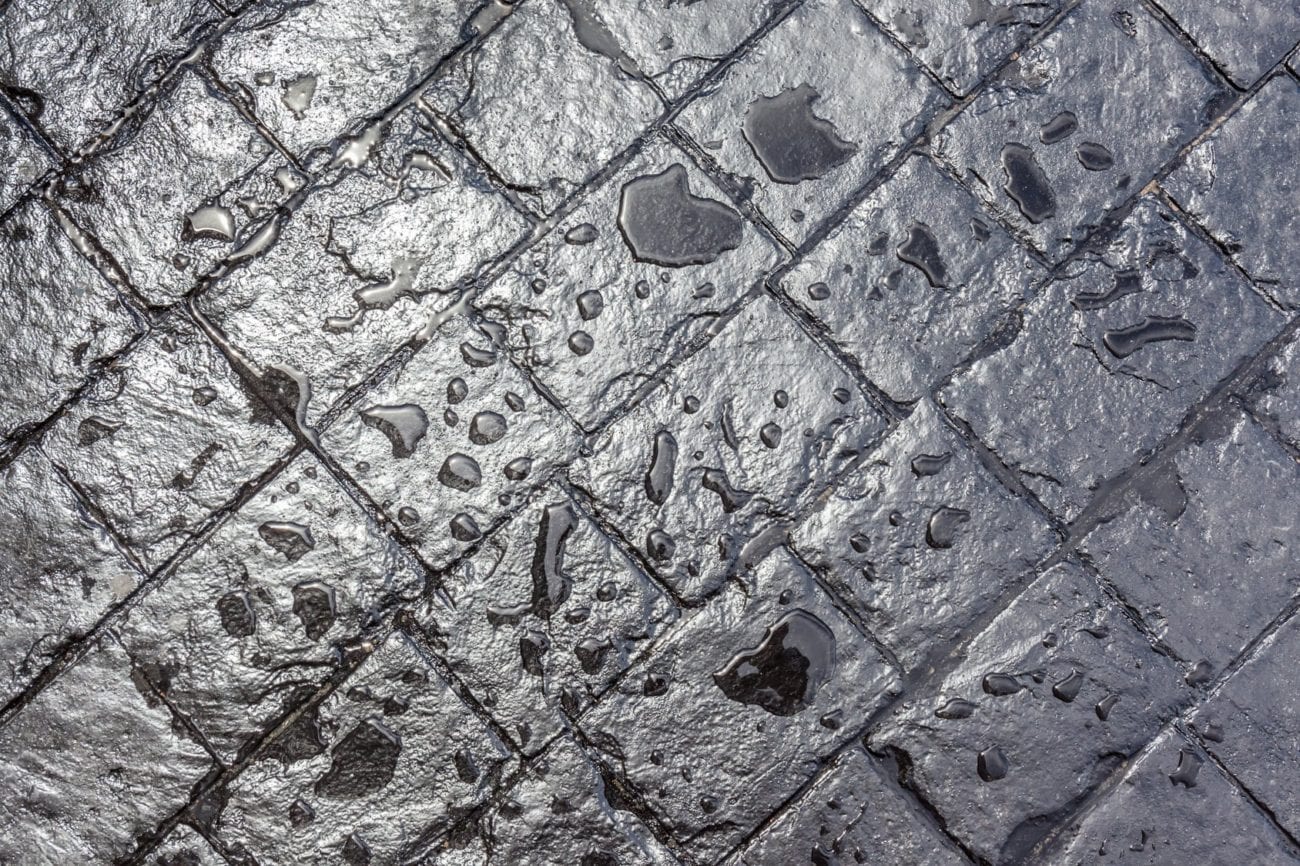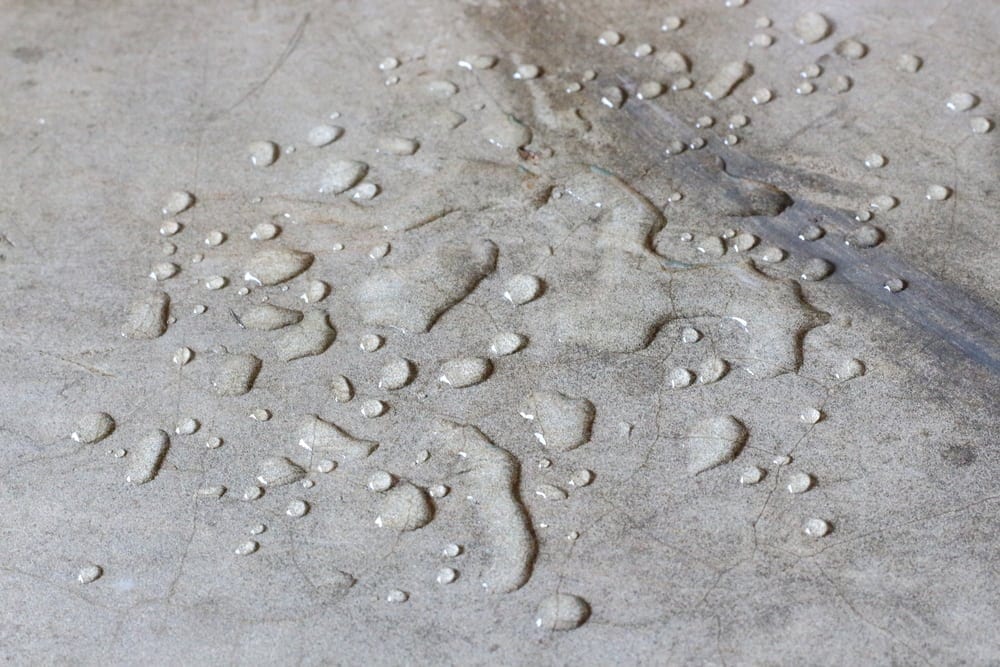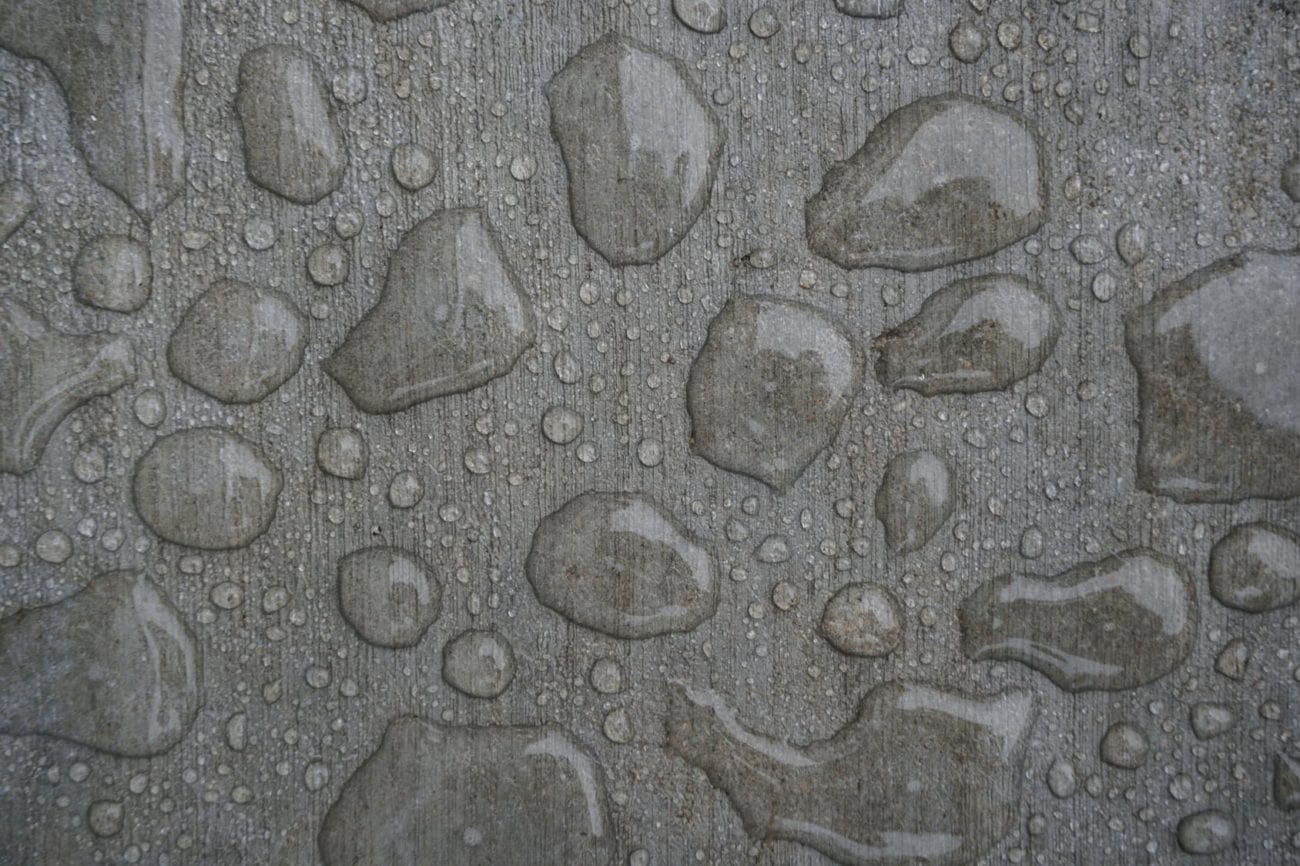One of the largest problems homeowners, contractors and industry professionals face is water, moisture and vapor transmission issues. There are thousands of sealers on the market that claim to waterproof, repel water and prevent moisture but which products actually live up to their claims? Water repellents are usually classified as products that repel water, sounds simple enough. But what makes a good water repellent is the formula, type of sealer high percentage of solids.
Products that are excellent water repellents are silane/siloxane based formulas. Silane/Siloxanes are a blend of two different types of sealers: silanes and siloxanes. What makes a silane/siloxane so appealing is the difference in molecular size and the blend of smaller and larger particles. If the sealer is an industrial grade formula water will also bead and you will be able to visually see the formula working before your eyes. When looking for a silane/siloxane look for a high percentage formula. 20% and 40% silane/siloxanes are optimal and the best solutions for concrete water repellency. If you have ever had problems with concrete blocks or cinder blocks a silane/siloxane is the product to use. When sealing bricks or masonry a silane/siloxane is the product to use. When looking for a water repellent a silane/siloxane is the product to use. Some tested products that have been proven effective are: Okon S-40, Siloxa-Tek 8500 and Enviroseal 40
With the excessive number of companies manufacturing and distributing concrete sealers continuing to grow, it is important to eradicate some of the more pervasive myths. Most of these myths have to do with the concrete sealers and their propensity to repel or completely protect against water. Waterproofing concrete sealers are hard to find – typically the only types of sealers that can truly waterproof are lithium silicate/siliconate products that are not exactly everywhere on the market as they are more expensive to produce. Most companies simply content themselves to label their lesser (and less expensive to produce) products as waterproofers, when they will offer only a level of water resistance at best.
We now turn to examine the concrete sealers that claim to repel water. Water repellents are everywhere on the market, and many readers have been contacting me to ask whether or not products that claim to be water repellents actually are. In other words, does a water repellent truly repel water?
The answer is yes, they do. While there are many products that are developed and sold by unscrupulous companies who simply want to make money by offering a worse product for less money, there are a umber of companies that produce quality water repellent products. The key to see if your product is water repellent can, unfortunately, only happen after you have purchased and applied your concrete sealer. If you apply the sealer and any water that drips onto the surface of the concrete after the application and drying process has properly completed beads and drips off the concrete, then the product you used is indeed a water repellent sealers.
Water repellent sealers can be acrylics, but they are most often silane/siloxanes. Nearly all silane/siloxanes are water repellent, and they should be more or less bought with confidence. These products work by creating a hydrophobic barrier that locks out water with the particles of silane (that penetrate) and the particles of siloxane (that remain on the surface). This process creates the hydrophobic barrier that does not allow water to penetrate into the concrete, nor does it allow the water to even sit on the concrete surface, resulting in the beading and dripping off. Of course, water repellents are not waterproofers, and water will eventually seep into the concrete in minute amounts with the presence of enough water. However, as long as there is not standing water for a significant period of time, silane/siloxanes will offer comprehensive water repellent protection for your concrete surfaces.
While many concrete sealers claim to offer protection from water damage, most only offer some degree of water resistance. If you are looking for a true water repellent sealer, for instance, an acrylic will not really give you the protection you have in mind. Water repellent sealers are different from penetrating sealers because they are surface sealers. A good example to picture the protection offered by a water repellent would be that they act like a raincoat does. When applied to the concrete, the water visibly beads before sliding off, keeping the concrete dry underneath.
Just like penetrating sealers, water repellent sealers are appropriate for certain types of projects. A delicate piece of concrete cannot be treated with a concrete densifier or any other type of penetrating concrete sealer. Instead, a water repellent sealer is more appropriate, as these types of sealers feature large particles of sealant that cannot penetrate past the tiny surface pores natural to concrete. In order to ensure the concrete sealer is applied properly, you just need to pour out the sealer onto the concrete before spreading it out across the surface of the material.
If you are looking for a sealer that repels water, your best choice would be a silane/siloxane type of sealer. Be sure to look for a water-based variety that offers comparable levels of protection to solvent-based counterparts. Silane/siloxane sealers are made up of a blend of penetrating silane particles combined with surface-level siloxane particles. These two types of particles of chemical sealant function in concert to create a hydrophobic barrier that will block out water and excessive moisture from entering the concrete. The two types of sealant particles ensure that the surface of the concrete retains the most thorough possible protection, while the concrete itself is also protected in case any water seeps through the primary surface level of protection.
Our Take: Water repellents we recommend are Okon S-40 or Siloxa-Tek 8500
What are the best water repellent sealers?
If you are looking to apply a penetrating water repellent sealer we recommend choosing a silane/siloxane blend. Silane/Silixane blended concrete sealers not only penetrate concrete substrates providing concrete protection from the inside out but they chemically bond keeping water from entering the concrete. Since a Silane/Siloxane blended sealer is also a penetrating sealer driveways, sidewalks and high traffic areas will be unaffected and will not lose protection. After sealing, the concrete will stay in its natural state with no added sheen or texture. Water will be repelled and bead from the surface and concrete will be protected from water damage. Added bonuses are protection from: efflorescence, staining, spalling, scaling and deicing salts; it is considered a breathable sealer allowing water vapor to leave the slab. We recommend a Silane/Siloxane blended sealer for all concrete based surfaces especially concrete blocks, pavers, stucco, brick, clay tile, exposed aggregate, sandstone and slate. Since Silane/Siloxane sealers are blended sealers you get the benefits of two different products in one formula. Keep in mind even though they are penetrating sealers Silane/Siloxane blends are too topical in nature to be used in conjunction with a topical sealer such as an acrylic.




